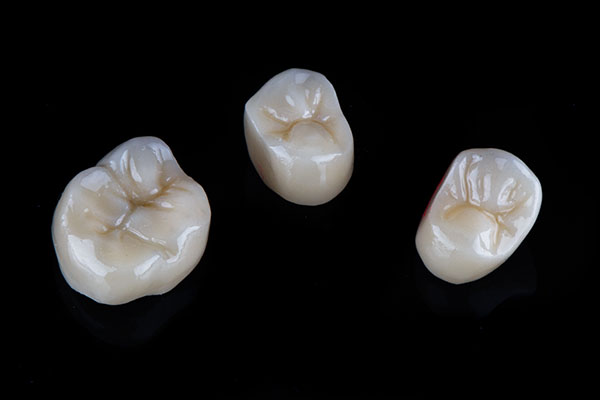 Many dental patients are self-conscious about missing teeth. Depending on the exact teeth that have been lost, this condition can also make it difficult to chew food. In many cases, a dental bridge can be used to replace lost teeth and restore a patient's smile.
Many dental patients are self-conscious about missing teeth. Depending on the exact teeth that have been lost, this condition can also make it difficult to chew food. In many cases, a dental bridge can be used to replace lost teeth and restore a patient's smile.
How do dental bridges work?
As the name suggests, a dental bridge uses an artificial tooth (called a "pontic") to bridge a gap in a patient's teeth. If pontics are not implanted into the jawbone, they need to connect to existing teeth.
Dental bridges connected to natural teeth
A traditional dental bridge connects the pontic to two dental crowns on either side of the gap. In this procedure, each tooth on either side of the gap is fitted with a dental crown, and the pontic is cemented to each crown. A simpler variant of the traditional bridge is the cantilever bridge, which connects a pontic to a single dental crown.
In some cases, a patient may prefer not to have the teeth on either side of a gap fitted with crowns. For these patients, a Maryland bridge may be a solution. A Maryland bridge also uses a pontic, but it is cemented to the natural teeth on either side of a dental gap. There is no need to fit these teeth with dental crowns, which simplifies the procedure.
Implant-supported bridges
For patients missing multiple teeth in a row, it is impossible to connect a pontic to two natural teeth. In these cases, implant-supported bridges may be advisable. For example, if a patient is missing three teeth in a row, the dental provider may place two implants and cement a pontic in the middle.
Getting implant-supported bridges tends to take longer than with other bridge types. Generally, an initial surgery places the implants, and the bridge is only placed after the implants have healed and successfully integrated with the jawbone. While the procedure takes more time, implant-supported bridges are usually considered to be the most stable and long-lasting bridge option available.
Check out what others are saying about our dental services on Yelp: Dental Bridges in San Francisco, CA.
Is a dental bridge or an implant a better solution?
While dental bridges can be an economical way to replace one or more missing teeth, they do have one important limitation: They usually need to be replaced after between five and 15 years. In younger patients, bridges may not be the first choice for tooth replacement. Some dental professionals may choose to go with a dental implant, which is a more permanent solution.
For patients who are unsure if they need a dental bridge or an implant, it is a good idea to speak with a dental professional. Dentists can talk through the benefits and drawbacks of each option and often will make a recommendation based on the individual patient's circumstances.
Conclusion
Missing teeth can cause problems in everyday life, but patients can consult a dental professional for guidance on their replacement. Thanks to advances in dental technology, dental bridge replacements often blend in with the rest of a patient's new smile.
Request an appointment or call Serenity Dental Spa at 415-376-6196 for an appointment in our San Francisco office.
Related Posts
Dental bridges are a reliable and effective solution for replacing missing teeth, restoring both the function and appearance of the smile. They fill the gaps created by one or more absent teeth, preventing surrounding teeth from shifting and maintaining proper alignment. Dental bridges offer a long-term solution that supports oral health, enhances chewing and speaking,…
Losing a tooth can impact oral health and confidence, making a dental bridge or implant a crucial option to consider. Our dentist can use a dental bridge to restore the appearance and functionality of a smile with a sturdy artificial replacement. By understanding these tooth replacement methods, patients can make an informed decision on the…
Think you might need a dental bridge? Read on to learn more about this restoration. According to the National Institute of Craniofacial and Dental Research, adults aged 20–64 have an average of three decayed or missing teeth. A dental bridge is among the most important restorative dentistry procedures, helping to restore optimal dental health and…


